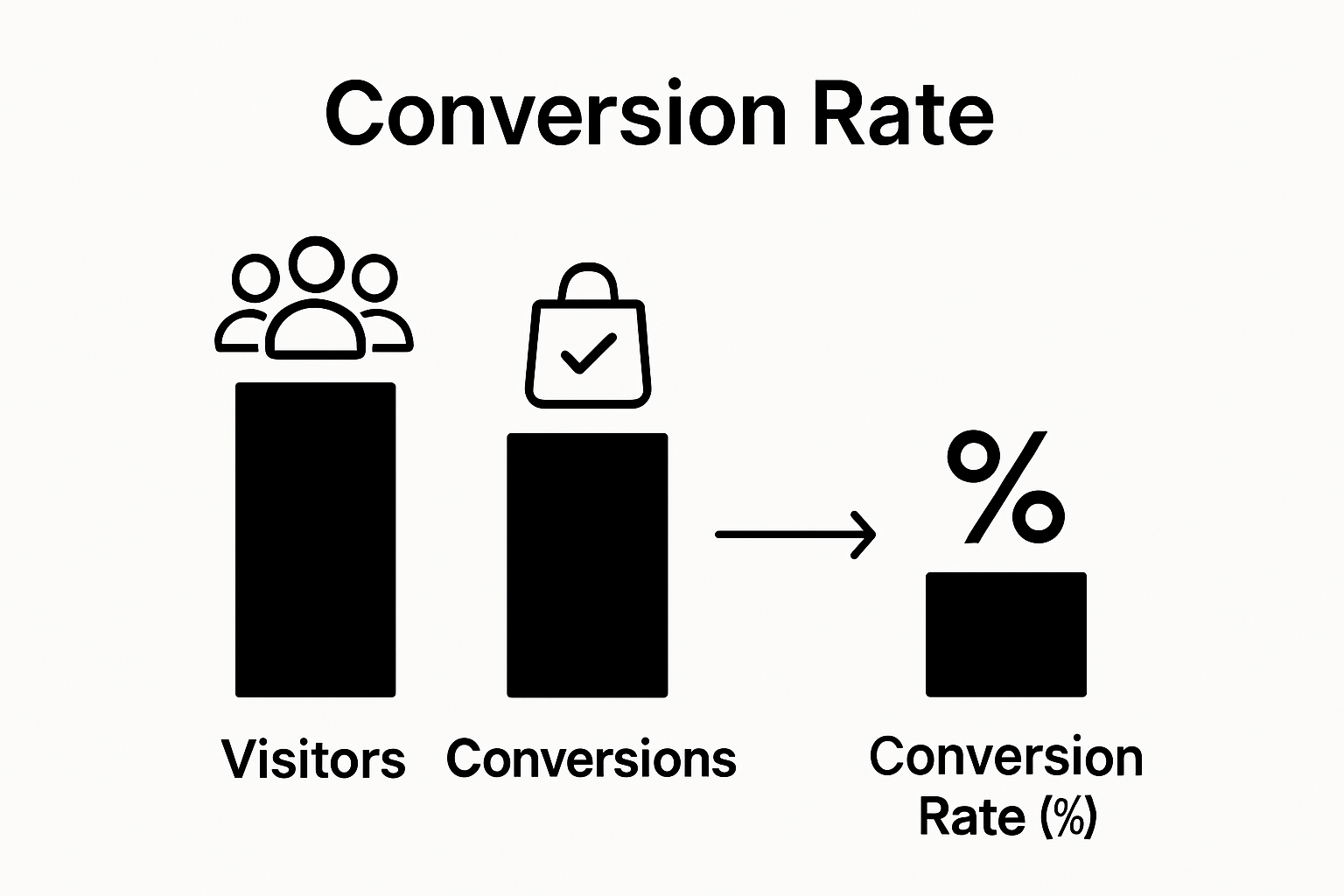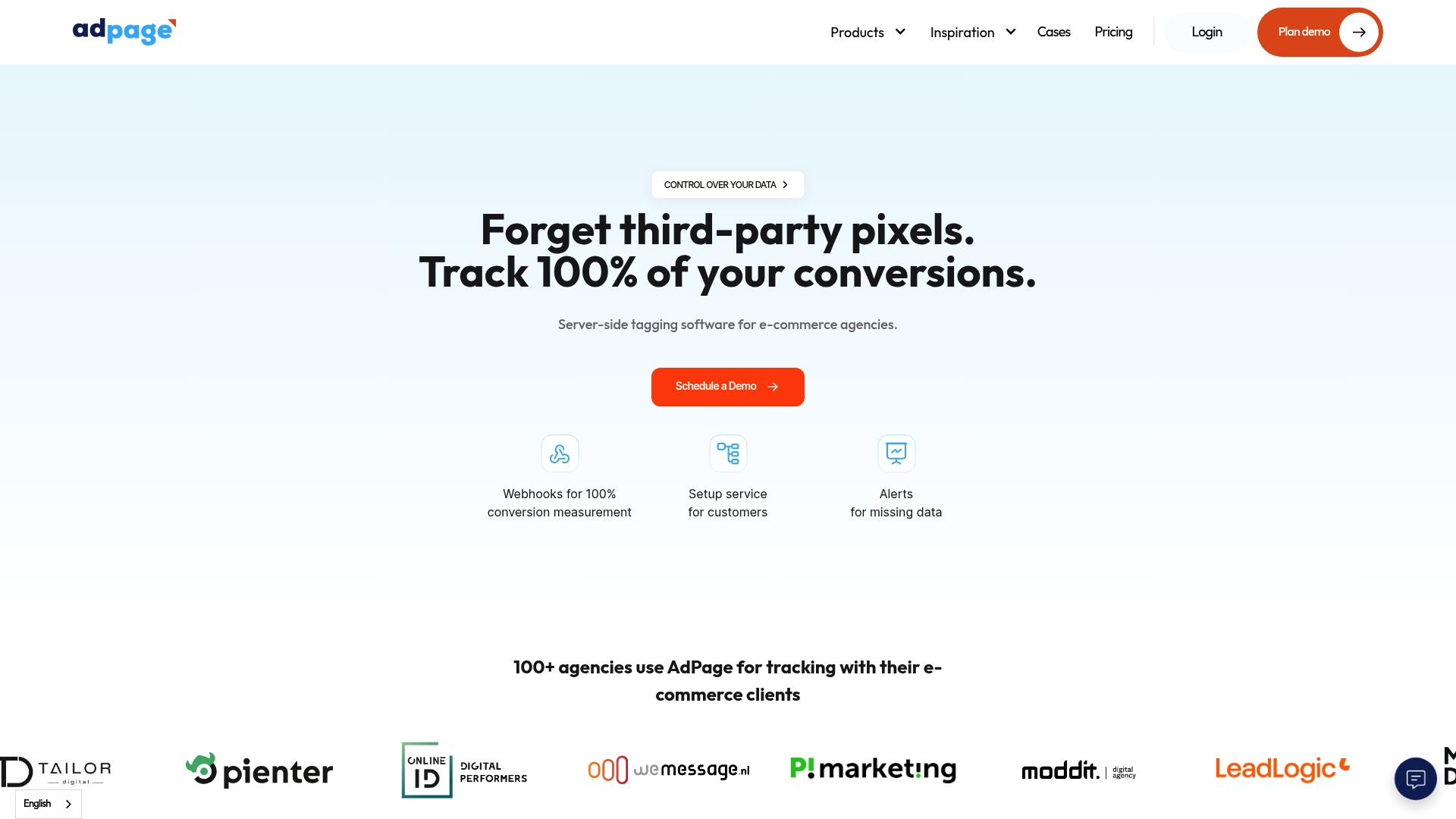Conversion rates are the numbers every e-commerce business wants to push higher and for good reason. Just a 1 percent increase in conversion rate can mean thousands in extra revenue for some shops. Most people assume it is all about getting more visitors or flashy ads. But the real power lies in knowing exactly how these rates are measured and what subtle factors quietly double or halve your sales. There is a lot more going on beneath the surface than you might expect.
Table of Contents
- What Are Conversion Rates and How Are They Measured?
- The Significance of Conversion Rates in E-commerce Success
- Key Factors Influencing Conversion Rates.
- Interpreting Conversion Rate Data for Business Growth.
- Practical Applications of Conversion Rates in Digital Marketing
Quick Summary
| Takeaway | Explanation |
|---|---|
| Measure conversion rates accurately | Divide successful conversions by total visitors and multiply by 100 to find percentage. |
| Focus on user experience design | A seamless website interface enhances user satisfaction, increasing potential conversions. |
| Recognize various conversion types | Track micro, macro, and engagement conversions to gauge customer behaviors and interests effectively. |
| Use data for strategic marketing | Apply conversion insights to refine targeting, channel performance, and content optimization in marketing campaigns. |
| Interpret data within context | Ensure clarity by understanding sample size, duration, and significant factors affecting conversion rates. |
What Are Conversion Rates and How Are They Measured?
A conversion rate represents the percentage of website visitors who complete a specific desired action, transforming casual browsing into meaningful business engagement. In e-commerce, this action most frequently involves purchasing a product, but can also include newsletter sign-ups, account registrations, or downloading content.
Understanding Conversion Rate Fundamentals
Converting web traffic into tangible results requires precise measurement. The conversion rate calculation is straightforward: divide the number of successful conversions by the total number of website visitors, then multiply by 100 to get a percentage. For instance, if 50 people purchase from 1000 website visitors, the conversion rate would be 5%.

Learn more about tracking conversions systematically can help businesses understand their digital performance more comprehensively.
According to Digital.gov's Web Design System, conversion metrics are critical because they directly reflect how effectively a website transforms potential customers into actual buyers. The calculation involves several key considerations:
- Total number of website visitors
- Number of completed desired actions
- Specific business objectives
Types of Conversion Metrics
E-commerce businesses track multiple conversion types beyond simple sales. These might include:
- Micro-conversions: Smaller actions indicating potential customer interest
- Macro-conversions: Complete transactions representing primary business goals
- Engagement conversions: Interactions demonstrating customer interest
By understanding these nuanced conversion metrics, businesses can develop more sophisticated strategies for improving their online performance and customer acquisition rates.
To provide clarity on important types of conversion metrics used in e-commerce, the following table summarizes key categories and their definitions.
| Conversion Metric | Description |
|---|---|
| Micro-conversions | Small actions indicating user interest (e.g., adding to basket, signing up for a newsletter) |
| Macro-conversions | Primary business objectives achieved (e.g., completed purchase transaction) |
| Engagement conversions | Customer interactions that show interest, such as downloading content or account creations |
The Significance of Conversion Rates in E-commerce Success
Conversion rates serve as a critical performance indicator for e-commerce businesses, directly translating website traffic into tangible financial outcomes. These metrics go beyond simple numerical representations, offering profound insights into customer behavior, marketing effectiveness, and overall business strategy.
Financial Impact of Conversion Rates
The economic significance of conversion rates cannot be overstated. According to U.S. Census Bureau data, e-commerce sales represent a substantial portion of total retail revenue. Small percentage improvements in conversion rates can generate substantial financial gains, making them a pivotal metric for business growth.
Unlock advanced conversion strategies that can transform your online business performance.
Key financial implications include:
- Direct Revenue Generation: Higher conversion rates mean more completed purchases
- Cost Efficiency: Improved conversions reduce customer acquisition expenses
- Marketing ROI: Better understanding of campaign effectiveness
Strategic Business Intelligence
Conversion rates provide more than financial metrics; they offer strategic business intelligence. They reveal critical insights about customer experience, product appeal, and potential friction points in the purchasing journey. Understanding these nuances allows businesses to:
- Identify user experience barriers
- Optimise marketing channels
- Refine product offerings
- Personalize customer interactions
By treating conversion rates as a comprehensive performance indicator, e-commerce businesses can develop more responsive, customer-centric strategies that drive sustainable growth and competitive advantage.
Key Factors Influencing Conversion Rates.
Conversion rates are not arbitrary metrics but complex outcomes shaped by multiple interconnected variables. Understanding these critical factors enables e-commerce businesses to systematically improve their online performance and customer engagement strategies.
Website User Experience
The design and functionality of an e-commerce website significantly impact conversion potential. A seamless, intuitive user interface can dramatically reduce friction in the purchasing journey. Key elements include clear navigation, fast loading speeds, mobile responsiveness, and streamlined checkout processes.
Discover advanced marketing techniques that can enhance your website's conversion potential.
According to the U.S. Federal Trade Commission, transparent and ethical design practices are crucial. Critical user experience considerations include:
- Page Load Speed: Faster websites reduce abandonment rates
- Mobile Compatibility: Responsive design across devices
- Intuitive Navigation: Clear pathways to product information and purchase
Trust and Credibility Signals
Potential customers require reassurance before completing transactions. Trust signals play a pivotal role in conversion rates by mitigating perceived risks associated with online purchasing. These include:
- Customer reviews and testimonials
- Security badges and payment protection guarantees
- Transparent pricing and return policies
- Professional, up-to-date website design
By systematically addressing these factors, e-commerce businesses can create an environment that encourages customer confidence and facilitates smoother purchasing decisions.
The table below outlines principal factors that influence e-commerce conversion rates and what each entails, helping businesses identify where to focus their optimization efforts.
| Factor | Significance |
|---|---|
| Page Load Speed | Faster websites help reduce visitor abandonment rates, supporting increased conversions |
| Mobile Compatibility | Ensures usability across devices, expanding the customer base and improving overall experience |
| Intuitive Navigation | Clear pathways enable customers to find products and complete purchases with fewer obstacles |
| Customer Reviews/Testimonies | Serve as trust signals, increasing buyer confidence in the online shopping experience |
| Security Badges | Demonstrates payment protection and data security, reassuring customers about transaction safety |
| Transparent Pricing/Policies | Clearly displayed prices and returns policies help remove doubts, supporting decision-making |
| Professional Design | A modern, well-maintained website appearance fosters credibility and assures visitors of legitimate business operations |

Interpreting Conversion Rate Data for Business Growth.
Interpreting conversion rate data requires more than simple numerical analysis. It demands a sophisticated approach that transforms raw metrics into strategic insights, enabling businesses to make informed decisions about growth, marketing investments, and customer experience optimization.
Statistical Significance and Contextual Understanding.
Raw conversion rate percentages can be misleading without proper statistical context. Businesses must distinguish between genuine performance improvements and statistical noise. Understanding the margin of error, sample size, and potential experimental biases becomes crucial for accurate interpretation.
Explore advanced data analysis techniques that can elevate your business intelligence.
According to peer-reviewed research on experimental design, critical considerations when interpreting conversion data include:
- Sample Size: Larger samples provide more reliable insights
- Experimental Duration: Longer testing periods reduce statistical uncertainty
- Controlled Variables: Isolating specific factors influencing conversion rates
Holistic Performance Metrics
Conversion rates should never be viewed in isolation. Successful businesses integrate multiple performance indicators to develop a comprehensive understanding of their digital ecosystem. Key supplementary metrics include:
- Customer acquisition cost
- Average order value
- Customer lifetime value
- Retention and repeat purchase rates
By adopting a nuanced, multi-dimensional approach to data interpretation, e-commerce businesses can uncover deeper insights that drive sustainable growth and strategic decision-making.
Practical Applications of Conversion Rates in Digital Marketing
Conversion rates transcend abstract metrics, serving as powerful strategic tools that guide targeted marketing efforts and resource allocation. Digital marketers leverage these insights to create more effective, data-driven campaigns that directly impact business performance.
Strategic Campaign Optimization
Understanding conversion rates enables marketers to refine targeting strategies and allocate budgets more precisely. By analyzing which channels, demographics, and content types generate higher conversion rates, businesses can focus their marketing investments where they deliver maximum returns.
Discover expert marketing strategies that can transform your digital performance.
According to the U.S. Web Design System, performance metrics directly influence conversion potential. Critical strategic considerations include:
- Channel Performance: Identifying most effective marketing platforms
- Audience Segmentation: Targeting high-converting customer groups
- Content Optimization: Developing messaging that resonates with specific segments
Experimental Marketing Approaches
Digital marketing increasingly relies on systematic experimentation to improve conversion rates. A/B testing, multivariate analysis, and controlled experiments allow marketers to:
- Test different design elements
- Compare messaging variations
- Evaluate pricing strategies
- Understand user behavior patterns
By adopting a scientific approach to marketing, businesses can incrementally improve their conversion performance, transforming data into actionable strategic insights.
Unlock Accurate E-commerce Conversion Tracking
Are you frustrated by inaccurate data hindering your e-commerce growth? The article highlights how even small errors in measuring conversion rates can lead to misleading insights and poor business decisions. Many online retailers struggle to trust their analytics due to data loss or privacy regulations, making it nearly impossible to capture the full picture. With so much riding on reliable conversion tracking, using outdated methods only stacks the odds against you.

Stop letting incomplete data cost your business. AdPage empowers you to monitor 100% of conversions through server-side tagging and robust consent management. Our tools ensure every action is captured securely and in compliance with GDPR. Integrate seamlessly with platforms such as Shopify, WooCommerce, or Magento, and receive onboarding support to simplify the transition. See how precise data collection leads to better strategies and higher profits. Learn more about optimising conversions with AdPage, or discover the full platform benefits today and secure your competitive edge.
Frequently Asked Questions
What is a conversion rate in e-commerce?
A conversion rate in e-commerce is the percentage of website visitors who complete a desired action, such as making a purchase, signing up for a newsletter, or registering an account.
How do you calculate conversion rates?
To calculate conversion rates, divide the number of successful conversions by the total number of website visitors, then multiply by 100 to get a percentage. For example, if 50 out of 1000 visitors make a purchase, the conversion rate is 5%.
Why are conversion rates important for online businesses?
Conversion rates are crucial because they directly correlate to revenue generation and marketing effectiveness. Higher conversion rates mean more completed purchases, which translates into increased sales and financial success.
What factors can affect conversion rates?
Several factors can impact conversion rates, including website user experience (such as load speed and mobile compatibility), trust and credibility signals (like customer reviews and secure payment options), and marketing strategies (such as targeted campaigns and A/B testing).



.png)
